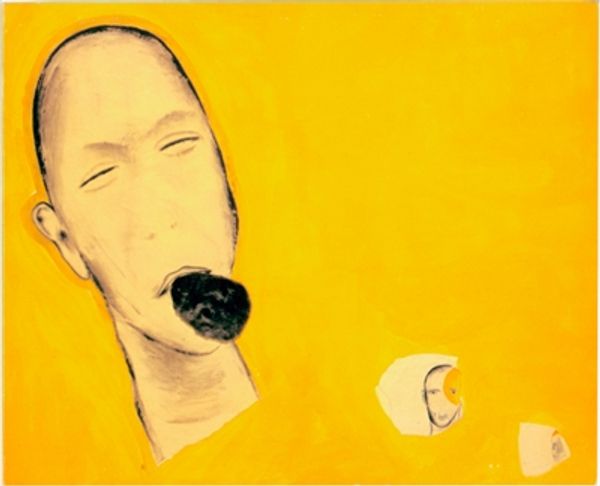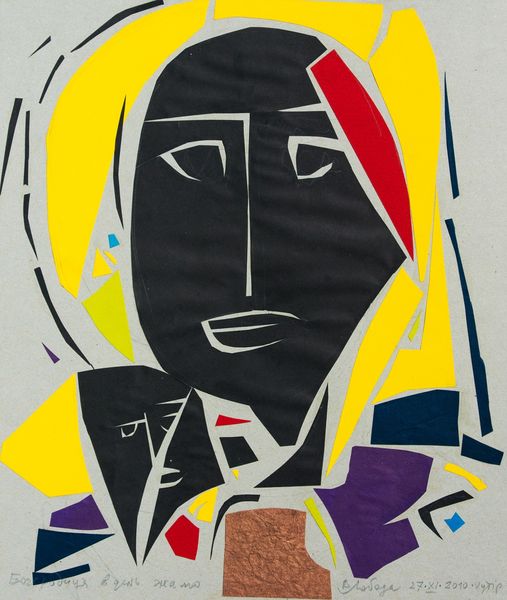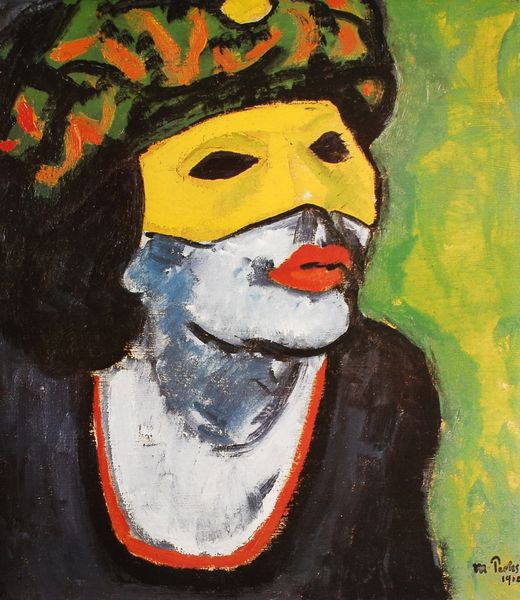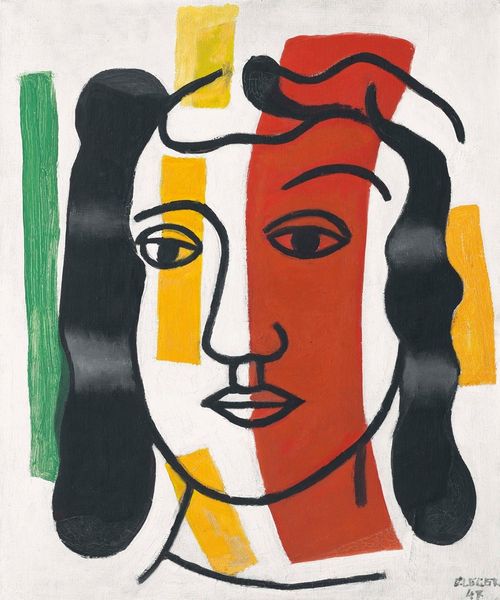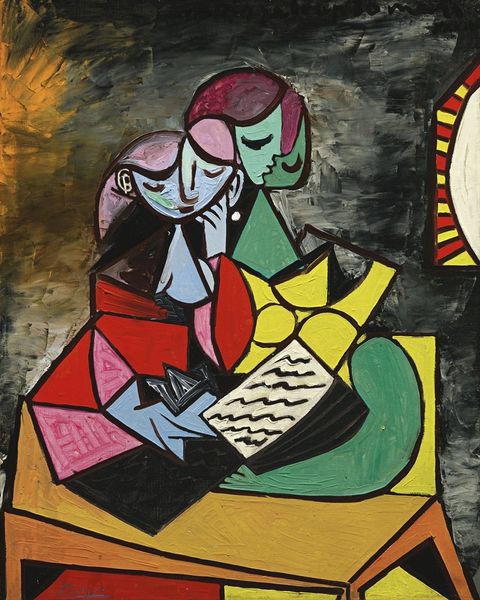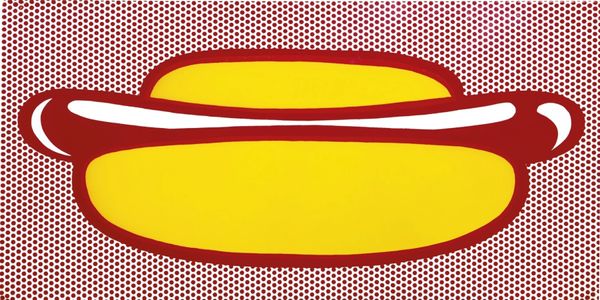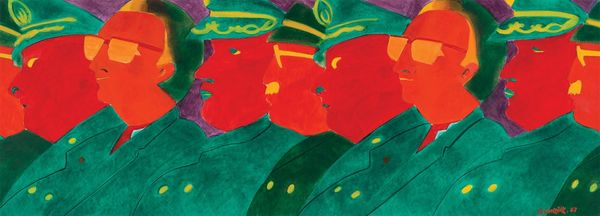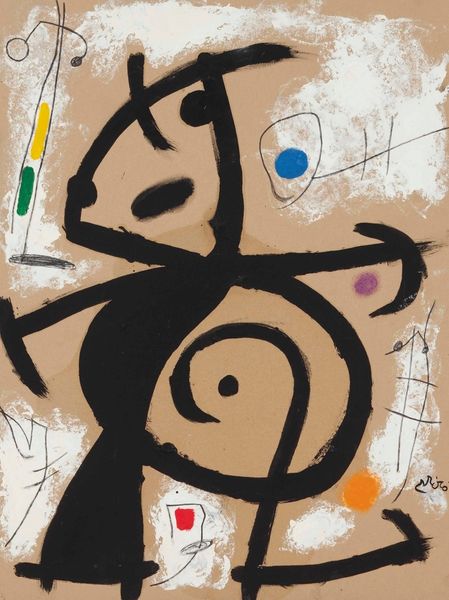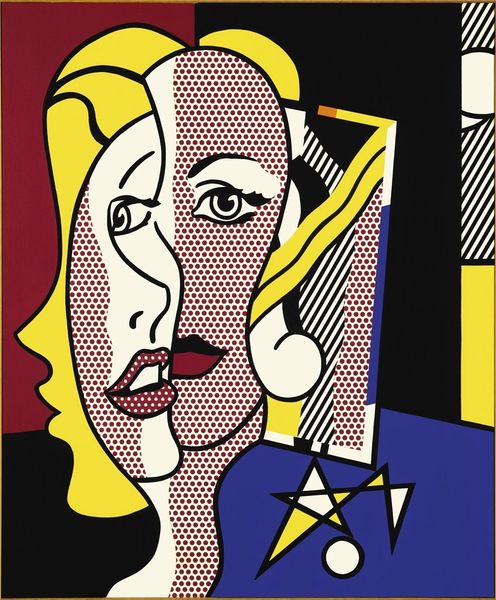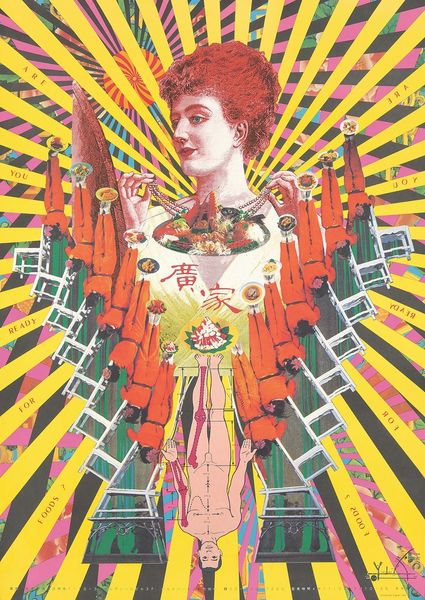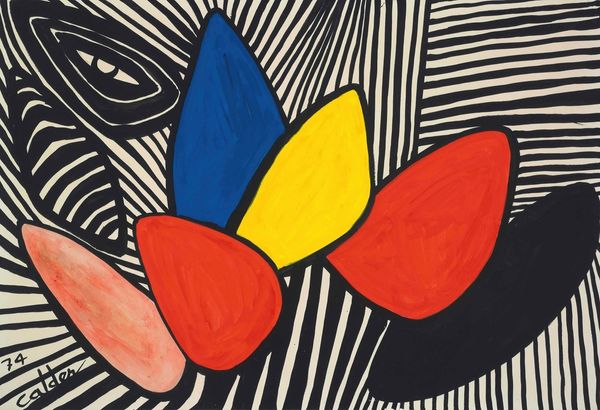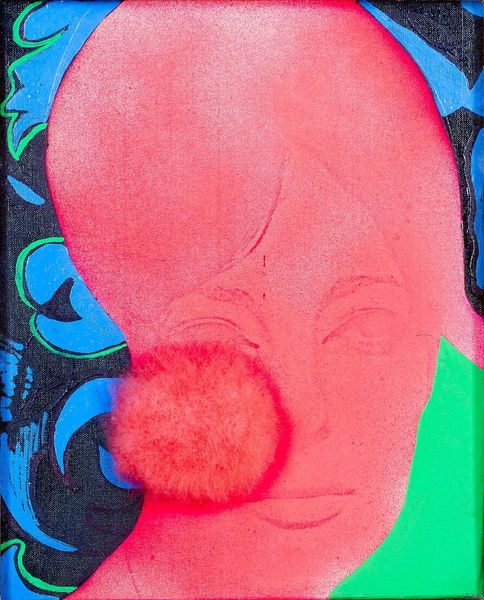
painting, acrylic-paint
#
portrait
#
pop art-esque
#
popart
#
head
#
face
#
painting
#
caricature
#
caricature
#
pop art
#
acrylic-paint
#
neo-pop
#
pop-art
#
modernism
Copyright: Romero Britto,Fair Use
Curator: We are looking at Romero Britto's acrylic on canvas work, "Mao Zedong." Editor: My immediate impression is that the bright, almost aggressively cheerful color palette clashes wildly with the subject. It feels deeply unsettling. Curator: Indeed. The tension arises precisely from this discordance. Britto employs a high-key color scheme, simplified forms, and bold outlines typical of Pop Art. Note the graphic patterns, reminiscent of street art and commercial design, dissecting the Chairman's features. Semiotically, this fragmentation could represent the complexities and contradictions inherent in Mao's legacy. Editor: I see it as a biting commentary. Look how Britto juxtaposes Mao's image with the golden arches and the words "Pure Sugar." This directly critiques the insidious creep of Western capitalism and consumerism into China after Mao's death. It seems to conflate political icons with the empty promises of corporate brands. Curator: Interesting observation. Considering formal qualities, how do you perceive the artist deploying flat planes? Note the absence of chiaroscuro—traditionally used to render depth. Editor: The flattening effect ironically diminishes Mao's imposing presence. He is no longer the larger-than-life figure but a two-dimensional commodity, instantly reproducible and, in a sense, emptied of his political potency. The use of 'pure sugar', the fast-food reference - Britto is indicting a more generalized craving. Curator: An excellent point. And what does the application of Pop Art aesthetic—often associated with celebration—reveal about Britto’s overall interpretation of this controversial figure? Is it sincere, or deeply ironic? Editor: Sincerity, here, is impossible. The overall effect borders on caricature. I think Britto appropriates the language of Pop Art, ironically to strip away the original intentions. Britto wants to jolt us into confronting the ironies of history. It speaks to art's ability to function as a mirror, reflecting the shifting values of a globalized world. Curator: Agreed. An unusual application of aesthetic forms when tackling a difficult subject, leading to interesting discussion points. Editor: Precisely. I think it’s crucial in deciphering the power that comes from this aesthetic clash.
Comments
No comments
Be the first to comment and join the conversation on the ultimate creative platform.
